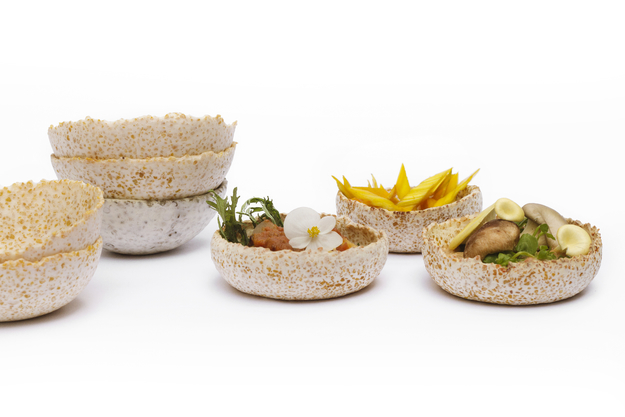Edible Futures - The Exhibition
The exhibition takes the visitor far into the future and looks back onto present day. By taking the liberty of stepping into a world of completely speculative scenarios, the visitor is removed from their daily reality and is allowed to think freely, unconnected to the boundaries of our time.
The method of looking back from the future to the present is called ‘backcasting.’ When we think about the future, we have the tendency to take our own time and life as starting point, look at the technological developments going on and project them on the future. But when we look back at the past from the future, we see that developments are not linear. Technology is an important part of our future but we also have to take social, psychological, political and cultural influences into account. These elements make the future much less predictable.
Ranging from the ultimate speculative to designs that are close to implementation, the exhibited work illustrates the audio story but also garner interest standing alone. The selected designs all bring their own stimulating perspective, raise questions on how we deal with food and show alternative ways of thinking, whether they be dystopian, utopian or neutral reflections on food and eating.
The audio stories for consumers and producers are different and in both stories, visitors have to actively think and act from the position of the role they have chosen. At the end of the exhibition the visitor chooses which designs they would prefer to see in the future. Through the act of active participation, the visitor not only passively consumes the exhibition, but actively understands that they are a part of our real future and are able to influence it today.
The participating artists and their projects are:
Alexandra Genis – ‘Atoma’
Laila Snevele – ‘Digital Seasoning’
Paul Gong – ‘Human Hyena’
Johanna Schmeer – ‘Bioplastic Fantastic’
Alexandra Fruhstorfer – ‘Menu from the New Wild’
Fernando Laposse – ‘Totomoxtle’
Arvid & Marie – ‘SAM’
Hannerie Visser – ‘S/zout’
Shaakira Jassat – ‘Tea Drop’
Mediamatic – ‘Tempehware’
Chloe Rutzerveld – ‘Digestive Food’
Julia Schwarz – ‘Unseen Edible’
Amanda Huynh – ‘Diasporic Dumplings’
The exhibition is produced by Valerie Kuster and designed by RuigWerk, with the graphic design by Ernst Ruijgrok and the exhibition design by Kamiel Vorwerk.
